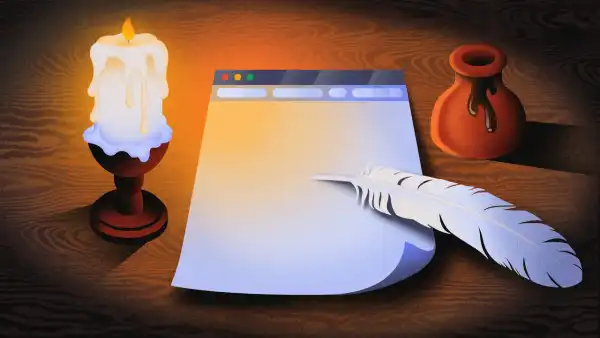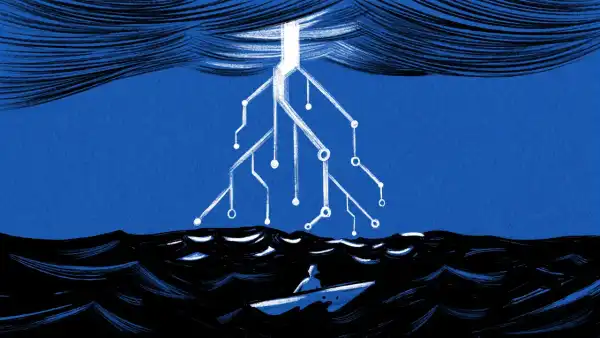
Save this storySave this storySave this storySave this story
The familiar desktop initially surfaced on a personal computer back in 1981, coinciding with the debut of the Xerox 8010 Star Information System. That creation pioneered the graphical-user interface, or G.U.I., a handy compilation of visual symbols facilitating simpler interactions with our devices. The most rudimentary computer interface is the command-line prompt, the vacant field where users input instructions in code straight to the machine; the Xerox Star substituted that forbidding void with a welcoming depiction of a tabletop facade, rendered in patterned pixels, peppered with icons representing folders, spreadsheets, and document holders. A 1982 article concerning the device characterized the then groundbreaking system: “Users are invited to perceive the components on the Desktop in tangible terms. You have the option to rearrange the icons to customize your Desktop as desired. (Cluttered Desktops are definitely achievable, much like in everyday life.)” That disarray arises from the files we disperse across our desktops, assemblages of information in formats that appear progressively cryptic and outdated: PDFs, JPGs, ZIPs, M4As. Resembling a conventional desk drawer, the desktop has evolved into something we habitually overcrowd and subsequently overlook.
Over the last ten years of computing, the desktop has faded. Digital-file systems have followed the path of the physical inbox tray. Instead, we employ the search function to retrieve any file we wish to locate or utilize apps that furnish discrete, refined encounters for absorbing or generating content. Our phone home screens offer even less personalization and less uniqueness than our computer desktops; we seldom consider individual files existing on our phones. Apple recently presented an iPhone operating-system interface overhaul named Liquid Glass that renders its icons transparent, further standardizing their visual aspect. Even such icons may soon be a thing of the past. The potential of artificial intelligence is that the desktop will vanish entirely and users will solely engage with a chatbot or a voice that will fulfill their directives through straightforward language alone, transforming the entire computer into a humanlike entity. No clutter there, just A.I. efficiency.
Amid the escalating automation of our computers—and the burgeoning of assistants and companions and agents crafted to accomplish tasks for us—I’ve contemplated more on the desktop concealed within the backdrop of the laptop I operate daily. Mine is blanketed with screenshots and Word documents and e-books. Yet, what I’ve accumulated the most of by far are TextEdit files, originating from the basic Mac app that simply enables you to input text into a clear window. Apple computers have incorporated text-editing software since the original Mac was unveiled, in 1984; the present rendition of the program debuted in the mid-nineties and has endured largely unchanged. Throughout the last few years, I’ve discovered myself depending on TextEdit increasingly as every other app has matured in complexity, incorporating cloud uploads, collaborative editing, and now generative A.I. TextEdit is not connected to the internet, unlike Google Docs. It is not integrated into a broader collection of workplace software, such as Microsoft Word. You can compose in TextEdit, and you can structure your writing with a scant selection of fonts and formatting. Those files are saved as RTFs (an abbreviation for rich-text format), a small step above the most fundamental TXT file. TextEdit now acts as my to-do-list app, my e-mail composition window, my private calendar, and my cache of self-directed memos, resembling virtual Post-its.
I have faith in TextEdit. It refrains from redesigning its interface without notice, as Spotify tends to do; it doesn’t promote new capabilities, nor does it require me to update the app biweekly, as Google Chrome does. I’ve experimented with alternative software for archiving my scattered thoughts and works in progress—the individual note-keeping app Evernote; the task-management board Trello; the cooperative digital workspace Notion, which has the capacity to store and disseminate company data. Each entices you to conform to a specific philosophy of organization, complete with its own layouts and filing procedures. Yet, nothing has benefited me more than the sheer simplicity of TextEdit, which makes no attempt to aid you whatsoever in the thought process. Employing the app is the nearest you can achieve to handwriting on a screen. I could generate lists on physical paper, naturally, but I’ve also noticed that my mind has been so irrevocably influenced by keyboards that I can solely transcribe my ideas by typing. (Evidently my internal dialogue unfolds in Arial font, size fourteen.)
TextEdit is software that delivers on its promises. Its app icon showcases a page of lined paper. The writing pane features an old-fashioned measuring scale in the header with adjustable margins, although I’ve never printed a TextEdit file. That brand of skeuomorphism—the construction of a digital interface to emulate a tangible one, by, for instance, applying a simulated-metal texture to a calculator app—has been passé for over a decade, since Apple transitioned away from it in the early twenty-tens. But the literalist approach is resurfacing as A.I. disrupts our technological interactions once more and compels us to seek fresh metaphors to govern our digital existences. Earlier this year, Airbnb unveiled a highly skeuomorphic redesign, substituting its buttons with miniature animated depictions of real-world objects: a gabled home, for rentals; a hot-air balloon, for “experiences”; and a concierge bell, for services. The message of the interface is, Have confidence in our software; it will furnish precisely what it pledges. In reality, though, Airbnb’s offerings remain rather unclear, and steered by algorithmic suggestions that endeavor to foresee the user’s needs.
We users have come to understand that cloud-based apps and digital platforms are more prone to monitor us, extract our data, and sway our attention than to furnish us the precise content and services we desire. Companies are endeavoring to counteract that collective sentiment of distrust in numerous other ways. This month, the A.I. firm Anthropic sought to present itself with a more amiable, more tangible persona by hosting a pop-up at a West Village storefront which it allegedly dubbed a “zero slop zone.” Attendees received complimentary baseball caps embroidered with the word “thinking”—irrespective of the fact that the product the company advances is supposed to perform the thinking for you. Pinterest, the origin of numerous grievances about A.I. images, has permitted users to reduce A.I. content in search results, and iPhones feature a setting that deactivates Apple Intelligence functionalities. The optimal means of reclaiming our digital experiences, though, might be to remain loyal to the likes of TextEdit, software that is incapable of performing anything except adhering to our directives. ♦
Sourse: newyorker.com






